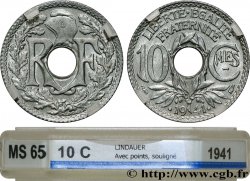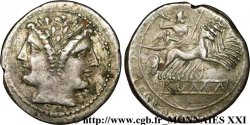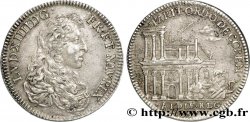v30_1156 - VINGT Centimes État français, frappe courante 1941 Paris F.152/2
MONNAIES 30 (2007)
Начальная цена : 30.00 €
Назначить цену : 100.00 €
Цена реализации : 73.00 €
Количество ставок : 4
Максимальная предлагаемая цена : 73.00 €
Начальная цена : 30.00 €
Назначить цену : 100.00 €
Цена реализации : 73.00 €
Количество ставок : 4
Максимальная предлагаемая цена : 73.00 €
Тип VINGT Centimes État français, frappe courante
Дата: 1941
Монетный двор / Город: Paris
Количество отчеканенных монет: 54044000
Металл: zinc
Диаметр: 24,18 mm
Ориентация осей монеты: 6 h.
Вес: 3,56 g.
Век: striures fines
Комментарии о состоянии
Aucune trace de circulation mais surface mate et sombre
Ссылки в каталоге: :
Лицевая сторона
Аверс: легенда: ETAT / FRANÇAIS.
Аверс: описание: en deux lignes, au-dessus d'un trou central bordé d'un listel, au-dessous duquel se trouvent quatre épis de blé maintenus par une bague ; à gauche des épis A. DE G..
Обратная сторона
Реверс: легенда: VINGT / CENTIMES / 1941.
Реверс: Описание: au-dessus et au-dessous d'un trou central bordé d'un listel accosté de deux rameaux de chêne, chacun étant composé de trois feuilles et d'un gland.
Комментарий
Cet exemplaire ne semble présenter aucune caractéristique particulière mais sa présence dans la collection Pierre laisse supposer une variante. Peut-être s’agit-il d’un alliage de zinc différent du standard ? En effet, la lecture du Mazard, page 216, montre que des frappes, en 1939, furent faites avec des alliages de zinc variées mais, dans ce cas, les perforations centrales furent elles aussi variées pour les distinguer, ce qui n’est pas le cas ici. Il faudra un jour que le propriétaire de cette pièce trouve une méthode d’analyse non destructive d’un coût raisonnable...
This example does not appear to have any particular characteristics, but its presence in the Pierre collection suggests a variant. Perhaps it is a different zinc alloy than the standard? Indeed, reading the Mazard, page 216, shows that strikes in 1939 were made with various zinc alloys, but in this case, the central perforations were also varied to distinguish them, which is not the case here. The owner of this piece will one day have to find a non-destructive analysis method at a reasonable cost.
This example does not appear to have any particular characteristics, but its presence in the Pierre collection suggests a variant. Perhaps it is a different zinc alloy than the standard? Indeed, reading the Mazard, page 216, shows that strikes in 1939 were made with various zinc alloys, but in this case, the central perforations were also varied to distinguish them, which is not the case here. The owner of this piece will one day have to find a non-destructive analysis method at a reasonable cost.








 Cообщить об ошибке
Cообщить об ошибке Распечатать страницу
Распечатать страницу Отправить мой выбор
Отправить мой выбор Задать вопрос
Задать вопрос Consign / sell
Consign / sell
 Информация
Информация













